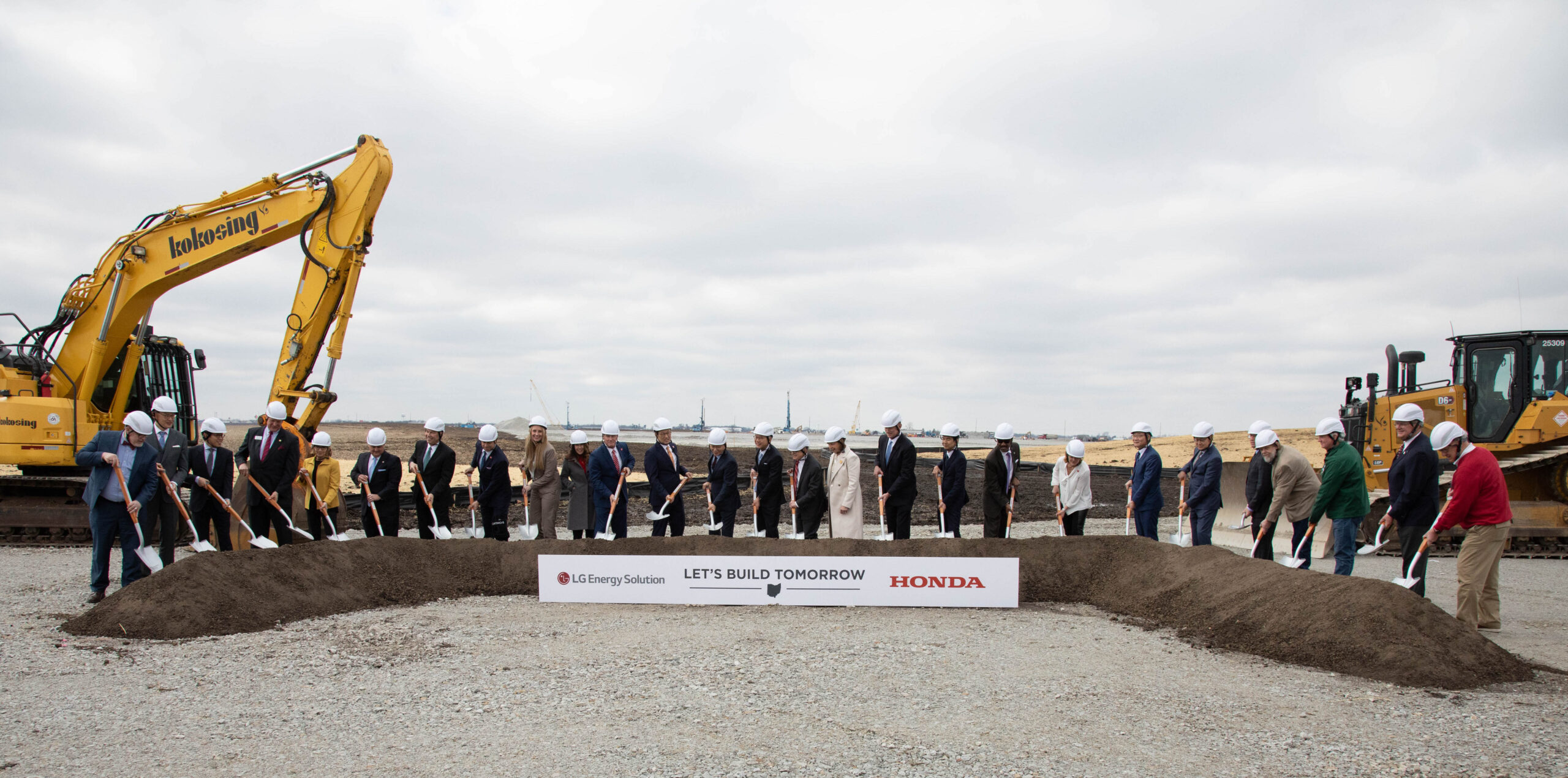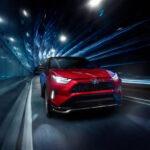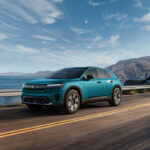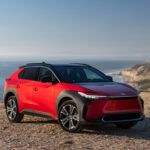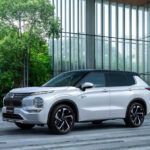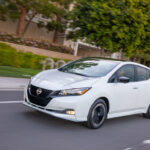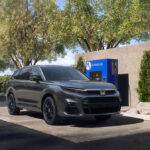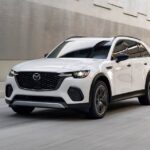Investing in an Electrified Future
Since 2017, Japanese-brand automakers' investments and commitments in electrification have reached $30 billion
This effort reflects Japanese-brand automakers' contributions to U.S. economic competitiveness and the global transition to electrified vehicles. JAMA members further the transition by their particiation across the electrified vehicle supply chain int the U.S. from battery manufacturing and vehicle production to battery recycling.
The Electrification Ecosystem
Battery Manufacturing
JAMA members are supporting their U.S. electrified vehicle manufacturing operations by investing in developing U.S. battery manufacturing capacity. This includes the $13 billion Toyota investment for a new battery facility in North Carolina expected to come online in 2025 and will produce batteries for both hybrid electric vehicles and battery electric vehicles. With a projected investment of over $4 billion, the joint venture between Honda and LG Energy Solutions in Ohio to build a battery plant aims to start mass production of batteries in 2025 to supply Honda’s U.S. EV Hub.
Infrastructure
An electrified future requires a multitude of charging solutions to meet consumer needs.The partnership between Toyota and the San Diego Gas and Electric company or Nissan’s work with Fermata Energy to explore vehicle-to-grid technology, and Honda’s collaboration with other automakers to establish a series of electric vehicle chargers under a new joint venture called IONNA, exemplify Japanese-brand automakers’ efforts to help meet this need.
R&D
Due to decades of contributions to R&D and design in the U.S., Japanese-brand automakers are well-positioned to help drive innovation and support the build-out of the U.S. battery supply chain. This includes the $50 million battery research lab Toyota is building in Michigan and, through its long standing partnership, Honda and Ohio State University will open a $22 million battery cell research and development center in Ohio.
Battery Recycling
Manufacturing vehicle batteries in the U.S means identifying a secure, clean, and reliable supply chain of critical minerals, and battery recycling may play a major role in supporting this effort. To that end, Toyota and Redwood Materials together continue to explore ways to reuse cathode active material and anode copper foil from batteries that have already reached their end of life. Similarly, Honda is working with Ascend Elements and Cirba Solutions, both U.S.-based companies, to create a sustainable circular supply chain for electric vehicle battery materials.
Workforce Training
Japanese-brand automakers’ long history of workforce preparedness and continuous improvement are foundational to the transition to electrified vehicles and the strength of the U.S. automotive workforce. JAMA members with current or future U.S. electrified vehicle manufacturing are integrating software, robotics and electrical engineering know-how, the advancement of electro-mechanical and mechatronics technicians’ skills, along with training in areas including proper safety precautions when working with or near high voltage components.
Vehicle Production
Japanese-brand automakers have been expanding their 40+ year U.S. manufacturing legacy into electrified vehicles’ production. Nissan continues to expand its battery electric vehicle (BEV) production operations in Tennessee and Mississippi. Meanwhile, Honda’s conventional hybrid production in Ohio and Indiana and Toyota’s conventional and plug-in hybrid production in Indiana, Kentucky and Texas also continue to advance forward as Honda simultaneously embarks on its journey to create an EV Hub in Ohio and Toyota prepares for BEV production in Kentucky and Indiana.
Battery Manufacturing
JAMA members are supporting their U.S. electrified vehicle manufacturing operations by investing in developing U.S. battery manufacturing capacity. This includes the $13 billion Toyota investment for a new battery facility in North Carolina expected to come online in 2025 and will produce batteries for both hybrid electric vehicles and battery electric vehicles. With a projected investment of over $4 billion, the joint venture between Honda and LG Energy Solutions in Ohio to build a battery plant aims to start mass production of batteries in 2025 to supply Honda’s U.S. EV Hub.
Vehicle Production
Japanese-brand automakers have been expanding their 40+ year U.S. manufacturing legacy into electrified vehicles’ production. Nissan continues to expand its battery electric vehicle (BEV) production operations in Tennessee and Mississippi. Meanwhile, Honda’s conventional hybrid production in Ohio and Indiana and Toyota’s conventional and plug-in hybrid production in Indiana, Kentucky and Texas also continue to advance forward as Honda simultaneously embarks on its journey to create an EV Hub in Ohio and Toyota prepares for BEV production in Kentucky and Indiana.
Battery Recycling
Manufacturing vehicle batteries in the U.S means identifying a secure, clean, and reliable supply chain of critical minerals, and battery recycling may play a major role in supporting this effort. To that end, Toyota and Redwood Materials together continue to explore ways to reuse cathode active material and anode copper foil from batteries that have already reached their end of life. Similarly, Honda is working with Ascend Elements and Cirba Solutions, both U.S.-based companies, to create a sustainable circular supply chain for electric vehicle battery materials.
R&D
Due to decades of contributions to R&D and design in the U.S., Japanese-brand automakers are well-positioned to help drive innovation and support the build-out of the U.S. battery supply chain. This includes the $50 million battery research lab Toyota is building in Michigan and, through its long standing partnership, Honda and Ohio State University will open a $22 million battery cell research and development center in Ohio.
Workforce Training
Japanese-brand automakers’ long history of workforce preparedness and continuous improvement are foundational to the transition to electrified vehicles and the strength of the U.S. automotive workforce. JAMA members with current or future U.S. electrified vehicle manufacturing are integrating software, robotics and electrical engineering know-how, the advancement of electro-mechanical and mechatronics technicians’ skills, along with training in areas including proper safety precautions when working with or near high voltage components.
Infrastructure
An electrified future requires a multitude of charging solutions to meet consumer needs.The partnership between Toyota and the San Diego Gas and Electric company or Nissan’s work with Fermata Energy to explore vehicle-to-grid technology, and Honda’s collaboration with other automakers to establish a series of electric vehicle chargers under a new joint venture called IONNA, exemplify Japanese-brand automakers’ efforts to help meet this need.
Battery Manufacturing
JAMA members are supporting their U.S. electrified vehicle manufacturing operations by investing in developing U.S. battery manufacturing capacity. This includes the $13 billion Toyota investment for a new battery facility in North Carolina expected to come online in 2025 and will produce batteries for both hybrid electric vehicles and battery electric vehicles. With a projected investment of over $4 billion, the joint venture between Honda and LG Energy Solutions in Ohio to build a battery plant aims to start mass production of batteries in 2025 to supply Honda’s U.S. EV Hub.
Infrastructure
An electrified future requires a multitude of charging solutions to meet consumer needs.The partnership between Toyota and the San Diego Gas and Electric company or Nissan’s work with Fermata Energy to explore vehicle-to-grid technology, and Honda’s collaboration with other automakers to establish a series of electric vehicle chargers under a new joint venture called IONNA, exemplify Japanese-brand automakers’ efforts to help meet this need.
R&D
Due to decades of contributions to R&D and design in the U.S., Japanese-brand automakers are well-positioned to help drive innovation and support the build-out of the U.S. battery supply chain. This includes the $50 million battery research lab Toyota is building in Michigan and, through its long standing partnership, Honda and Ohio State University will open a $22 million battery cell research and development center in Ohio.
Battery Recycling
Manufacturing vehicle batteries in the U.S means identifying a secure, clean, and reliable supply chain of critical minerals, and battery recycling may play a major role in supporting this effort. To that end, Toyota and Redwood Materials together continue to explore ways to reuse cathode active material and anode copper foil from batteries that have already reached their end of life. Similarly, Honda is working with Ascend Elements and Cirba Solutions, both U.S.-based companies, to create a sustainable circular supply chain for electric vehicle battery materials.
Workforce Training
Japanese-brand automakers’ long history of workforce preparedness and continuous improvement are foundational to the transition to electrified vehicles and the strength of the U.S. automotive workforce. JAMA members with current or future U.S. electrified vehicle manufacturing are integrating software, robotics and electrical engineering know-how, the advancement of electro-mechanical and mechatronics technicians’ skills, along with training in areas including proper safety precautions when working with or near high voltage components.
Vehicle Production
Japanese-brand automakers have been expanding their 40+ year U.S. manufacturing legacy into electrified vehicles’ production. Nissan continues to expand its battery electric vehicle (BEV) production operations in Tennessee and Mississippi. Meanwhile, Honda’s conventional hybrid production in Ohio and Indiana and Toyota’s conventional and plug-in hybrid production in Indiana, Kentucky and Texas also continue to advance forward as Honda simultaneously embarks on its journey to create an EV Hub in Ohio and Toyota prepares for BEV production in Kentucky and Indiana.
For more information on these projects, click below.
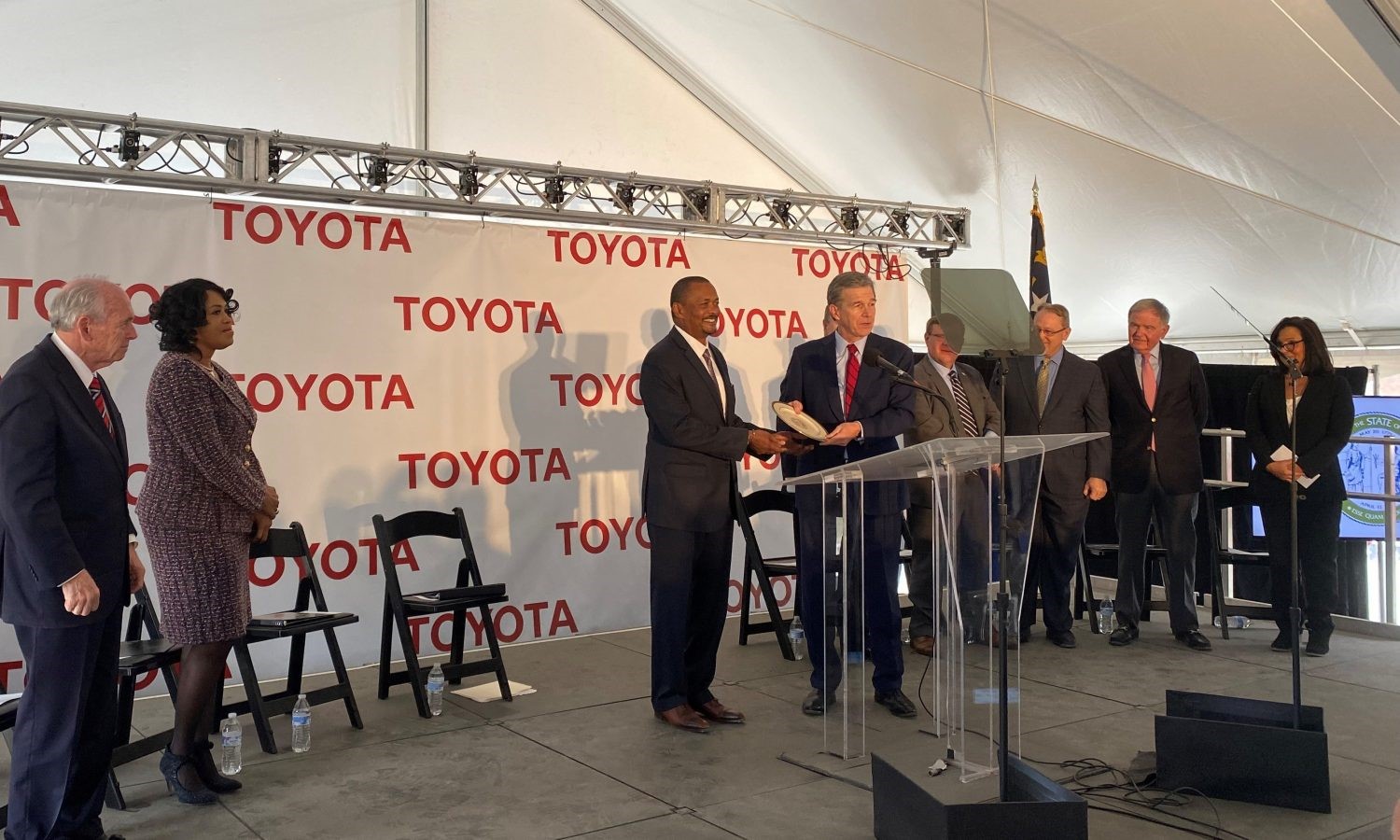
Toyota Battery Manufacturing, North Carolina (TBMNC) will begin producing batteries in 2025 and is expected to produce enough battery packs for 1.2 million electrified vehicles per year. The now $13.9 billion investment is expected to create 1,750 new American jobs. Toyota also recently announced a new $1 million in Randolph Country schools to help bolster their STEAM education programs.

Nissan has begun the process of upgrading their Canton, Mississippi plant with the latest in EV manufacturing technology to support production of two all-new, all-electric vehicles. The $500 million investment will preserve and upskill nearly 2,000 jobs, and production on the new vehicles is expected to begin in 2025.
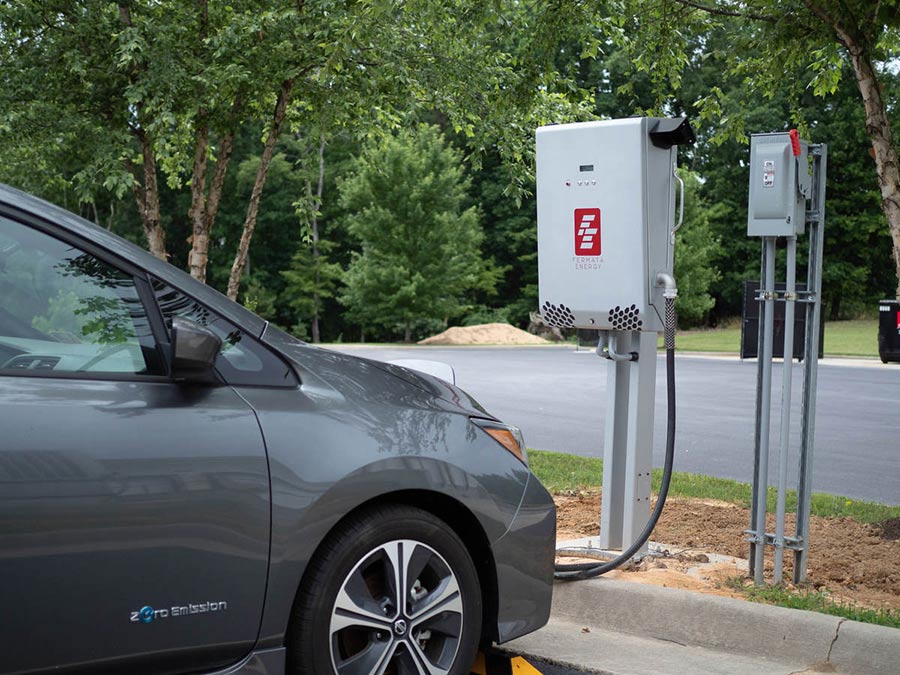
Nissan has announced that they are participating in the Department of Energy’s Vehicle to Everything (V2X) Memorandum of Understanding (MOU). The MOU will bring together cutting-edge resources from DOE, DOE national labs, state and local governments, utilities, and private entities to evaluate technical and economic feasibility as we integrate bidirectional charging into energy infrastructure.
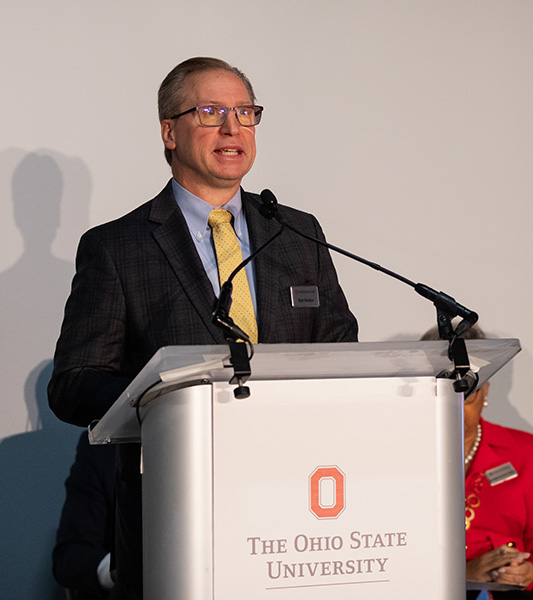
In 2023, Ohio State University (OSU), Honda, business, state, and federal leaders announced a new partnership for a battery cell research center. With $22 million in commitments to date, this project will include the renovation of a 25,000-square-foot facility in OSU’s innovation district into a dedicated battery cell research, production and education support space.
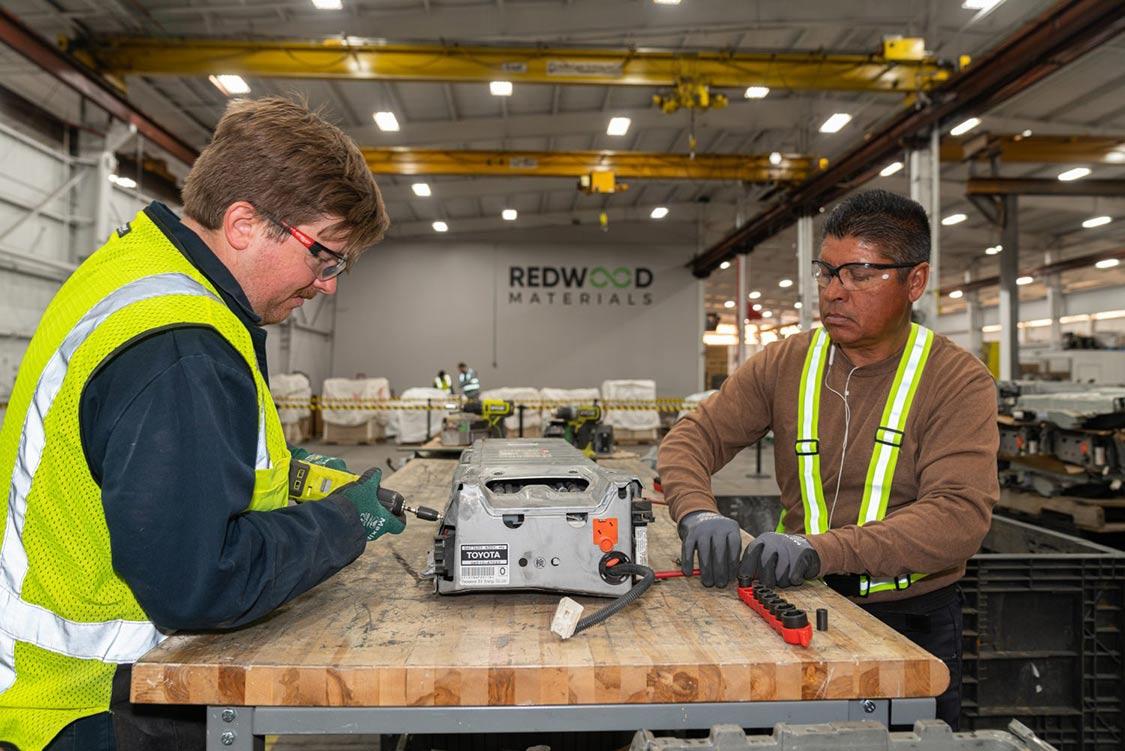
Toyota is collaborating with Redwood Materials to create a sustainable, closed-loop battery ecosystem for its electrified powertrains. Initially, this collaboration will focus on the collection, testing and recycling of Toyota hybrid electric vehicle batteries. The companies will then look to expand into other areas such as battery health screening and data management, remanufacturing and battery material supply throughout North America.
Electrified Vehicles for Every Consumer
Perhaps the most pivital aspect of the electrified vehicle transition is the consumer. After introducing electrified vehicles to the mass market nearly twenty-five years ago through conventional hybrid technology, Japanese-brand automakers’ choices for consumers have expanded significantly. Now, U.S. consumers can consider a variety of electrified vehicle options including conventional hybrids, various plug-in hybrid electric vehicles (PHEV) and increasingly battery electric vehicles (BEV) and a hydrogen fuel cell electric vehicle (FCEV). By 2030, JAMA members plan to bring over 100 different electrified models to market. Japanese-brand automakers are committed to a more electrified future and are working to give every consumer the electrified vehicle choice that best fits their lifestyle and needs.
The vehicles below are a testament to JAMA members’ dedication to providing consumers multiple electrified vehicle choices during the ongoing transition.
*BEV (battery electric vehicle), PHEV (plug-in hybrid electric vehicle), FCEV (fuel-cell electric vehicle)



